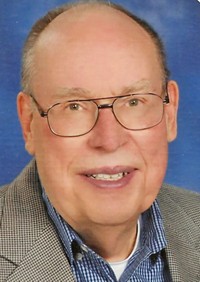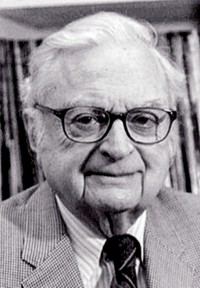Advertisement
Grab your lab coat. Let's get started
Welcome!
Welcome!
Create an account below to get 6 C&EN articles per month, receive newsletters and more - all free.
It seems this is your first time logging in online. Please enter the following information to continue.
As an ACS member you automatically get access to this site. All we need is few more details to create your reading experience.
Not you? Sign in with a different account.
Not you? Sign in with a different account.
ERROR 1
ERROR 1
ERROR 2
ERROR 2
ERROR 2
ERROR 2
ERROR 2
Password and Confirm password must match.
If you have an ACS member number, please enter it here so we can link this account to your membership. (optional)
ERROR 2
ACS values your privacy. By submitting your information, you are gaining access to C&EN and subscribing to our weekly newsletter. We use the information you provide to make your reading experience better, and we will never sell your data to third party members.
People
John R. Huizenga
by Susan J. Ainsworth
April 21, 2014
| A version of this story appeared in
Volume 92, Issue 16
John R. Huizenga, 92, the Tracy H. Harris Professor Emeritus of Chemistry & Physics at the University of Rochester and an internationally recognized leader in the field of nuclear science, died on Jan. 25 in La Jolla, Calif.
Born in Hulton, Ill., Huizenga earned a bachelor’s degree in mathematics and chemistry at Calvin College in Grand Rapids, Mich., in 1944. He then joined the Manhattan Project in Oak Ridge, Tenn. After World War II, he earned a Ph.D. in physical chemistry at the University of Illinois, Urbana-Champaign, in 1949.
He held joint appointments at the University of Chicago and Argonne National Laboratory.
At Argonne, Huizenga was part of a team of researchers who examined the residue from the 1952 detonation of the hydrogen bomb “Big Mike” on Enewetak Atoll in the Pacific Ocean. On the basis of their analysis, two elements were added to the periodic table: einsteinium and fermium.
Huizenga joined the University of Rochester in 1967 as a professor of chemistry and physics, serving five years as chair of the chemistry department. In his research, he studied the excited states of actinide nuclei by high-resolution reaction spectroscopy.
In 1989, the Department of Energy appointed Huizenga cochair of a panel that investigated and debunked the “cold fusion” claims of two University of Utah chemists who said they had achieved nuclear fusion at room temperature.
He received numerous fellowships and awards, including the Glenn T. Seaborg Award for Nuclear Chemistry from ACS in 1975.
Huizenga was a fellow of the American Academy of Arts & Sciences, the American Physical Society, and the American Association for the Advancement of Science. He was also a member of the National Academy of Sciences and an emeritus member of ACS, joining in 1946.
He was the author of “Cold Fusion: The Scientific Fiasco of the Century” and “Five Decades of Research in Nuclear Science,” as well as the coauthor of “Nuclear Fission” and “Damped Nuclear Reactions.”
Huizenga is survived by his daughters, Linda and Jann; sons, Robert and Joel; and three grandchildren. His wife of 54 years, Dolly, died in 1999.
Obituary notices of no more than 300 words may be sent to Susan J. Ainsworth at s_ainsworth@acs.org and should include an educational and professional history.




Join the conversation
Contact the reporter
Submit a Letter to the Editor for publication
Engage with us on Twitter